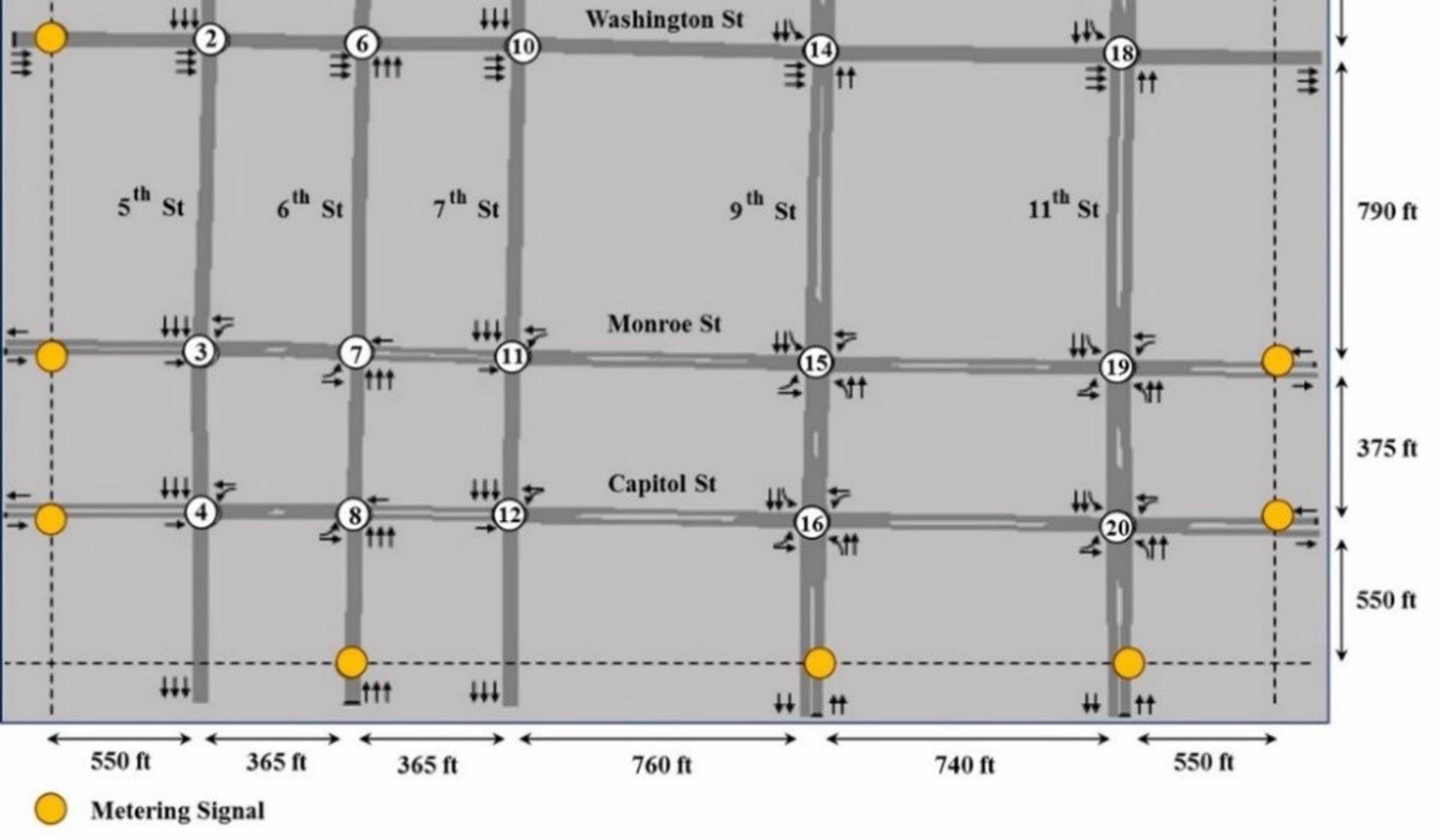As traffic congestion increases on urban street networks, a network’s ability to process vehicles decreases because of queue spillovers and gridlock. Traffic metering can help regulate the flow of vehicles entering congested areas to allow the network to operate at its optimum level. This study sought to develop a traffic metering method for urban street networks and to study the effects of metering on traffic operations.
Traffic congestion is one of the factors that contribute to traveler delay, fuel consumption, and air pollution on urban street networks. The goal of traffic metering is to regulate the number of vehicles entering congested parts of the networks to achieve the highest throughput. Metering can be achieved by placing bimodal traffic signals (those that indicate only green and red) at the borders of congested areas, similar to the way on-ramp metering regulates the flow of vehicles onto freeways.
This study developed an optimization program intended to increase the number of completed trips on urban street networks by controlling traffic metering rates. The case study results for a network of 20 intersections showed that traffic metering significantly improved traffic operations by reducing the travel time of vehicles inside the network by 30.8 to 34.2 percent in comparison to a no-metering strategy. Some vehicles were delayed at the metering signals; however, traffic metering reduced system-level travel times by 2.7 to 5.4 percent.
While the optimization technique proved effective at providing metering results very close to optimal results, it did not scale well with the size of the network, and its runtime was too long. The researchers addressed this issue by developing a distributed model, predictive control approach. The distributed approach deconstructed the network into several sub-networks and allocated computational resources to each sub-network. Each sub-network estimated vehicle density across all of its links at a time step, optimized the metering rate over a future planning horizon, and then shared information with other sub-networks. In tests, the distributed technique found solutions in real time that were at most 2.2 percent different than the optimal solutions.
Connected automated vehicles are expected to significantly change transportation systems, and studies have shown considerable improvements in intersection operations. Sensitivity analysis of the market penetration rate of connected vehicles in a simulated environment showed that network performance with traffic metering, in comparison to no metering, improved significantly as the penetration rate of connected vehicles increased from 0 percent to 30 percent. However, the improvements were negligible for penetration rates of higher than 30 percent.
Authors:
Ali Hajbabaie, North Carolina State University
Rasool Mohebifard, WSU Department of Civil and Environmental Engineering
Sponsor: PacTrans

